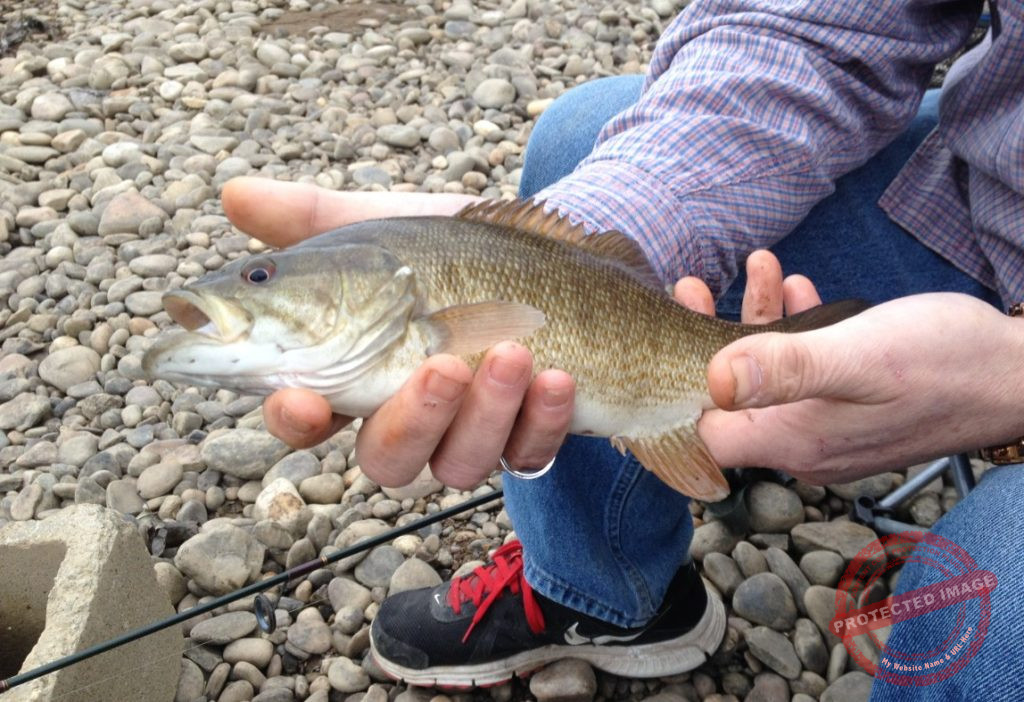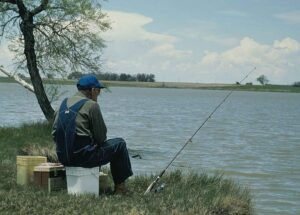Anglers often have questions. A majority are frequently asked questions. While some are easy to answer a few take a complete article. Asking questions will make you a better angler. Although, do not expect a few words to answer a lot of the questions completely.

What species you target and the type of water has an effect. Do you fish with lures or live bait? Think about how you fish before asking a question. Having better knowledge is what you want to achieve. This will require asking the right question and reading a complete answer on the topic.
- Frequently Asked Questions About General Fishing
- Frequently Asked Rod and Reel Questions
- Frequently Asked Lure Questions
- Hooks, Sinkers, and Line Questions
Frequently Asked Questions About General Fishing
The time you choose to fish affects success. Catfish are nocturnal, bass like early morning and evenings, and other fish have a time they prefer. Learning about the species helps with finding the right time.
Every region has waterways available for fishing. Ask friends or at a local tackle shop for recommendations. Also, your state likely has a list of waters with each species in the water. Look up the state’s DNR or Commission regulating the fisheries. These are great sources for beginners and novice anglers looking for a few places to fish. Where and when to fish is the knowledge needed to catch fish.
Going fishing a person needs a rod, reel, line, and terminal tackle. The rod and reel size is determined by the size of the fish and likewise with terminal tackle. If you know a fisherman ask them to take you. They may lend the gear needed. If you do not know any anglers check for rental or loaner programs in your area to try fishing.
The mornings and evenings tend to be best in spring and summer. During the fall and winter, the time varies. Fish may bite in the afternoon or early evening. The region you live in affects the time also. Fish will avoid a lot of sunlight. Fish when there is less light, such as on cloudy days.
A basic setup can be bought for under $100.00 or a little more. Higher quality and better performing gear will increase the price. It is best to set a budget to start and get a few items. Then have a small monthly budget to add more items.
All anglers make mistakes. Many issues can be corrected by avoiding common mistakes. Read this article on mistakes made by inexperienced anglers.
Pack baits are oats, bread crumbs, and corn with a flavoring added. There are numerous recipes online. The use and how to make it is easy. They are good for carp, freshwater drums, and catfish.
Identifying fish is very important. People can get into trouble keeping fish if undersized or are prohibited from harvesting. Check on your local licensing agency’s site for creel and size limits. These sites tend to have fish identification pages also.
The best casting results when line, rod, and technique work together. The lure rating, lure type, and size have effects also.
Frequently Asked Rod and Reel Questions
Each reel has advantages and disadvantages. Spinning reels are easier to use and recommended for beginners. A baitcast reel is better for using many of the lures. They hold up longer under constant use. There are many anglers using both types of reels. It comes down to preference in many cases.
Rod power is the strength of the rod or how hard it is to bend. The action is how the rod bends. A fast-action bends the most at the tip area. A moderate action will bend throughout more of the rod. It does make a difference with lures and methods of fishing. Read about how to choose a rod.
The power influences what lures can be cast and how good of a fight the fish will provide. An ultra-light is for panfish and some trout. Larger fish need more power. Catfish will need a medium or medium-heavy power based on the species. Read about how to choose a rod.
In general, most anglers will do well with fast action. This action is best with single-point hooks. If you are using lures with treble hooks most of the time a slower action will work better. Professional anglers use a moderate action for lures with treble hooks. This article will help you choose a rod power and action.
The reel size needs to match the rod power. A reel too light will cause too many problems. A reel too heavy is a major cause of broken rods and arm fatigue while fishing. Choosing the right size reel is done by matching line strength with the rod and reel.
Frequently Asked Lure Questions
Lure color is debatable. The best way of choosing the color is to have it contrast the surroundings. It should make a solid or bold silhouette with the bottom of the water or sky. Fish will see the silhouette and close in to strike. There are times a certain color is better. Learn what colors are best in each type of water and environmental condition.
The lures for fishing come in many types. Some work for all fish and others are species-specific. Beginners will find spinners the easiest to use and learn. Lures work in various situations. Learn what each lure is best in a situation and how to use them. Every angler will do best with a fast (reaction lure) and slow (finesse lure) moving lure.
Bass fishing uses four primary lure types. Soft plastics, spinners, crankbaits, and topwater are all good bass lures. A few are seasonal and some are for all year. The best lures for bass will cover these four types.
The primary species caught on top-water lures include bass, pike, and musky in freshwater. Trout and panfish will hit flies and small poppers on the surface. In general, the predatory species will feed throughout the water column.
Hooks, Sinkers, and Line Questions
There are many rigs for live bait. The water conditions affect how to rig for live bait. There are 5 rigs a beginner or novice needs to learn. The split shot and hook, high-low rig, slip rig, 3-way rig, and using float rigs are the basic riggings for live bait.
The monofilament line is low-cost and easiest to use. It has abrasion resistance and shock strength. Yet, does have memory-causing loops at times.
Braid is a good line also. The line is tough but lacks abrasion compared to monofilament. It is more sensitive allowing an angler to feel lighter bites. The best line for anglers depends on many factors.
Also, consider monofilament line floats, the braid is neutral, and fluorocarbon sinks having an effect on lures.
Choosing a hook, you need to know how each works and when to use a certain type of hook. The common live bait fisherman can use a baitholder. In other instances using the right hook type and size is important. The size is based on the fish species and size.
Sinkers come in many types. Each type will work well in the correct situation. A few are made to not roll or move. Then other sinkers or weights are for making bait hop along with the current. While a few improve casting distance by the shape. Learning which sinkers to use will make fishing easier. Plus you will have fewer snags.
Using monofilament go with the improved clinch knot. It is easy to learn and tie. It keeps good strength qualities with the monofilament line.
The basic guideline of line strength is 10 lbs. of line strength per ounce. If the sinker and bait weigh 1 ounce. You need a 10 lb. test strength line at a minimum. Throwing 2 ounces at least 20 lbs. test strength. Using a lighter line will result in the line snapping while casting.
Which knot is best for fishing?
Using monofilament go with the improved clinch knot. It is easy to learn and tie. It keeps good strength qualities with the monofilament line.
Using a braided line requires using a Palomar or Uni-knot. Some braided lines specify which knot to use. If the knot is not specified use the Palomar knot. The braided line has a coating making it slippery. Use the right knot or it will unravel and fail.
The fluorocarbon line is popular in some angling techniques. The line is unforgiving with knots. The Palomar or Uni-knots is best. They must be tied correctly or there is a high chance of failure. Connecting to another line type uses a double uni-knot.
Summary
These are a few common questions inexperienced anglers often ask. In the event, a question is not in the above ones listed. Use the comment section to ask your question. The question will be answered and added to the list above. Here are a few more useful tips for beginners.
John McIntyre

Leave a Reply